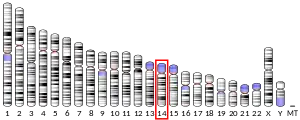| DHRS7 | |||||||||||||||||||||||||||||||||||||||||||||||||||
|---|---|---|---|---|---|---|---|---|---|---|---|---|---|---|---|---|---|---|---|---|---|---|---|---|---|---|---|---|---|---|---|---|---|---|---|---|---|---|---|---|---|---|---|---|---|---|---|---|---|---|---|
| Identifiers | |||||||||||||||||||||||||||||||||||||||||||||||||||
| Aliases | DHRS7, SDR34C1, retDSR4, retSDR4, CGI-86, dehydrogenase/reductase (SDR family) member 7, dehydrogenase/reductase 7 | ||||||||||||||||||||||||||||||||||||||||||||||||||
| External IDs | OMIM: 612833 MGI: 1913625 HomoloGene: 9350 GeneCards: DHRS7 | ||||||||||||||||||||||||||||||||||||||||||||||||||
| |||||||||||||||||||||||||||||||||||||||||||||||||||
| |||||||||||||||||||||||||||||||||||||||||||||||||||
| |||||||||||||||||||||||||||||||||||||||||||||||||||
| |||||||||||||||||||||||||||||||||||||||||||||||||||
| Wikidata | |||||||||||||||||||||||||||||||||||||||||||||||||||
| |||||||||||||||||||||||||||||||||||||||||||||||||||
Dehydrogenase/reductase (SDR family) member 7 is a protein that in humans is encoded by the DHRS7 gene.[5]
Function
Short-chain dehydrogenases/reductases (SDRs), such as DHRS7, catalyze the oxidation/reduction of a wide range of substrates, including retinoids and steroids.[6][7]
References
- 1 2 3 GRCh38: Ensembl release 89: ENSG00000100612 - Ensembl, May 2017
- 1 2 3 GRCm38: Ensembl release 89: ENSMUSG00000021094 - Ensembl, May 2017
- ↑ "Human PubMed Reference:". National Center for Biotechnology Information, U.S. National Library of Medicine.
- ↑ "Mouse PubMed Reference:". National Center for Biotechnology Information, U.S. National Library of Medicine.
- ↑ "Entrez Gene: Dehydrogenase/reductase (SDR family) member 7". Retrieved 2014-04-28.
- ↑ Araya S, Kratschmar DV, Tsachaki M, Stücheli S, Beck KR, Odermatt A (July 2017). "DHRS7 (SDR34C1) – A new player in the regulation of androgen receptor function by inactivation of 5α-dihydrotestosterone?". The Journal of Steroid Biochemistry and Molecular Biology. 171: 288–295. doi:10.1016/j.jsbmb.2017.04.013. PMID 28457967. S2CID 30060280.
- ↑ Štambergová H, Zemanová L, Lundová T, Malčeková B, Skarka A, Šaft M, Wsól V (January 2016). "Human DHRS7, promising enzyme in metabolism of steroids and retinoids?". Journal of Steroid Biochemistry and Molecular Biology. 155, Part A (Pt A): 112–119. doi:10.1016/j.jsbmb.2015.09.041. PMID 26466768. S2CID 25848948.
Further reading
- Persson B, Kallberg Y, Bray JE, Bruford E, Dellaporta SL, Favia AD, Duarte RG, Jörnvall H, Kavanagh KL, Kedishvili N, Kisiela M, Maser E, Mindnich R, Orchard S, Penning TM, Thornton JM, Adamski J, Oppermann U (March 2009). "The SDR (short-chain dehydrogenase/reductase and related enzymes) nomenclature initiative". Chemico-Biological Interactions. 178 (1–3): 94–8. doi:10.1016/j.cbi.2008.10.040. PMC 2896744. PMID 19027726.
- Ramasamy A, Curjuric I, Coin LJ, Kumar A, McArdle WL, Imboden M, Leynaert B, Kogevinas M, Schmid-Grendelmeier P, Pekkanen J, Wjst M, Bircher AJ, Sovio U, Rochat T, Hartikainen AL, Balding DJ, Jarvelin MR, Probst-Hensch N, Strachan DP, Jarvis DL (November 2011). "A genome-wide meta-analysis of genetic variants associated with allergic rhinitis and grass sensitization and their interaction with birth order". The Journal of Allergy and Clinical Immunology. 128 (5): 996–1005. doi:10.1016/j.jaci.2011.08.030. PMID 22036096.
- Štambergová H, Škarydová L, Dunford JE, Wsól V (January 2014). "Biochemical properties of human dehydrogenase/reductase (SDR family) member 7". Chemico-Biological Interactions. 207 (1): 52–7. doi:10.1016/j.cbi.2013.11.003. PMID 24246706.
- Skarka A, Škarydová L, Štambergová H, Wsól V (March 2014). "Purification and reconstitution of human membrane-bound DHRS7 (SDR34C1) from Sf9 cells". Protein Expression and Purification. 95: 44–49. doi:10.1016/j.pep.2013.11.013. PMID 24316191.
- Seibert JK, Quagliata L, Quintavalle C, Hammond TG, Terracciano L, Odermatt A (November 2015). "A role for the dehydrogenase DHRS7 (SDR34C1) in prostate cancer". Cancer Medicine. 4 (11): 1717–1729. doi:10.1002/cam4.517. PMC 4673999. PMID 26311046.
- Zemanová L, Kirubakaran P, Pato IH, Štambergová H, Vondrášek J (December 2017). "The identification of new substrates of human DHRS7 by molecular modeling and in vitro testing". International Journal of Biological Macromolecules. 105, Part 1 (Pt 1): 171–182. doi:10.1016/j.ijbiomac.2017.07.012. PMID 28687384.
- Stücheli S, Araya S, Ercan C, Moser SO, Gallon J, Jenö P, Piscuoglio S, Terracciano L, Odermatt A (June 2022). "The Potential Tumor-Suppressor DHRS7 Inversely Correlates with EGFR Expression in Prostate Cancer Cells and Tumor Samples". Cancers (Basel). 14 (13): 3074. doi:10.3390/cancers14133074. PMC 9264982. PMID 35804847.
This article incorporates text from the United States National Library of Medicine, which is in the public domain.
This article is issued from Wikipedia. The text is licensed under Creative Commons - Attribution - Sharealike. Additional terms may apply for the media files.



